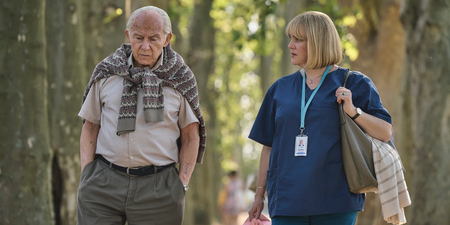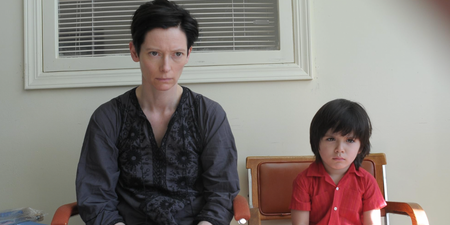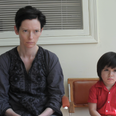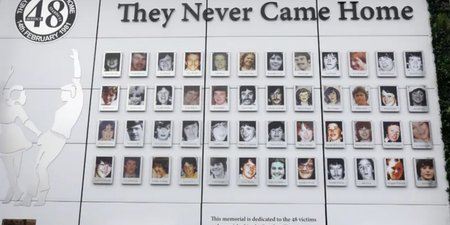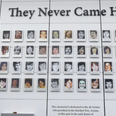Ann Napolitano has opened up about the heartbreaking inspiration behind her novel Dear Edward.
The book begins with a Los Angeles-bound flight which takes off from New York one summer morning. There are 192 passengers on board: among them a young woman taking a pregnancy test in the airplane toilet; a Wall Street millionaire flirting with the air hostess; an injured soldier returning from Afghanistan; and two beleaguered parents moving across the country with their adolescent sons, bickering over who gets the window seat.
And when the plane crashes suddenly in a field from Colorado, 12-year-old Edward Adler – the younger of the two boys – is the only one who survives.
Exploring his life in the aftermath of the crash, Dear Edward follows the young boy’s attempts to make sense of the meaning of his survival, the strangeness of his sudden fame, and find his place in the world without his family. He’s moved in with his aunt and his uncle, and his only solace comes from his friendship with his neighbour Shay.
Eventually, Edward and Shay make a startling discovery: hidden in his uncle’s garage are sacks of letters from the relatives of the other passengers, addressed to Edward. As Edward comes of age against the backdrop of sudden tragedy, he must confront some of life’s most profound questions: how do we make the most of the time we are given? And what does it mean not just to survive, but to truly live?

Ann told Her how the book was inspired by a real plane crash back in 2010, when a flight bound for London took off from South Africa – but crashed in Libya.
“It was mostly passengers on board, who were all on their way home from vacation. There was only one survivor, a nine-year-old Dutch boy and they found him still bucked into his airplane seat about a half a mile away from the rest of wreckage. He had a punctured lung and a broken leg, but he was otherwise fine. Everyone else on the flight, including his parents and his brother, had died immediately,” she said.
“I couldn’t read enough about this story – and also, social media had sort of taken a leap around that time. Everyone you knew was on Facebook, including your mother. And so there were girls around the same age as the Dutch boy that were posting pages to him on Facebook, talking about how cute he was and how sad they were for him. There were airplane aficionados speculating about why the plane may have crashed. There was a leak from inside the hospital that the president of Libya had called him.
“It was fascinating to me that we wren’t just getting the story from the journalists, we were getting it from everyone. There as a picture of the little boy that accompanied most of the articles; he was nine years old, so small and so broken. I had two little boys at the time time, [aged] one and three, and I just couldn’t imagine how that little boy was to be able to get out of that hospital bed and walk out of that hospital without his mom and his dad and his brother.
“I wanted him to be okay. And I couldn’t figure out how he could be okay. So, in a way, I thinkI wrote the novel as a set of fictional circumstances so that I could imagine a way in which someone in those circumstances would be OK.”
And while she worked on Dear Edward for eight years, the author explained that she “didn’t let” herself actually write for the first 12 months.
“I spent the first year just doing research and thinking and taking notes, I didn’t let myself write for the first year. I spoke to a commercial airline pilot, I read extensively about actual plane crashes that had happened through National Transportation Safety Board reports,” she explained, as she spoke about the research process for Dear Edward.
“I’m a nervous flier, and I never, I never would have thought that I would write a book about a plane crash. It requires a lot of learning because I wasn’t coming from a place like being aeronautics expert, or anything like that.”
And then the book required a different kind of research when it came to writing the characters on board the flight.
“The fact that it took place on an airplane was exciting to me as a writer, as I would have the chance to sort of follow people who are very different than each other, which wasn’t the case if you’re writing about like a family. You know, in a neighbourhood, in a town, you end up having people that are similar to each other in many ways,” she added.
From non-fiction books to fantasy epics, she read a number of different books to get a sense of the characters who would be on board the flight.
Dear Edward alternates between the present day and the moments on the plane – with the chapters side-by-side in the book, making sure that the reader is immersed in the story.
Napolitano explained that having the plane chapters and the present-day chapters side-by-side was one of the things she knew she wanted to do “right away”.
“There’s only like, a few things I knew I wanted when I started [Dear Edward] and one of them was that I knew I wanted those chapters to sit side-by-side,” she said.
“And I think it’s because I felt like, if you went through something as catastrophically horrible as what Edward goes through, it’s a weight that you’re never going to be able to set down. It’s a matter of learning to bear that weight. To me, it was always going to be a part of him – it was always going to be as present for him as his new present. Not necessarily in a horrible way, but it’s just part of what shaped him and made him who he is after.
To me, I don’t think of the plane sections as flashbacks. I think the two stories bear equal weight, sitting side-by-side.”
- Dear Edward, published by Viking, is available now.








